Panier
Close
- No products in the cart.
Sous total (Hors frais de livraison)
0,00€
Payer
Expédition et livraison
Réparation et maintenance
The foil is the key component that enables the wingfoiler to fly above the water. Its size has a direct influence on lift, speed and handling. Here are a few tips to help you decipher the main criteria to consider when choosing your foil, the model that’s right for you!… And to help you master the necessary technique without the hassle. You’ll then be able to fine-tune your choice according to your weight, level and goals, and enjoy the pleasures of a unique sport.
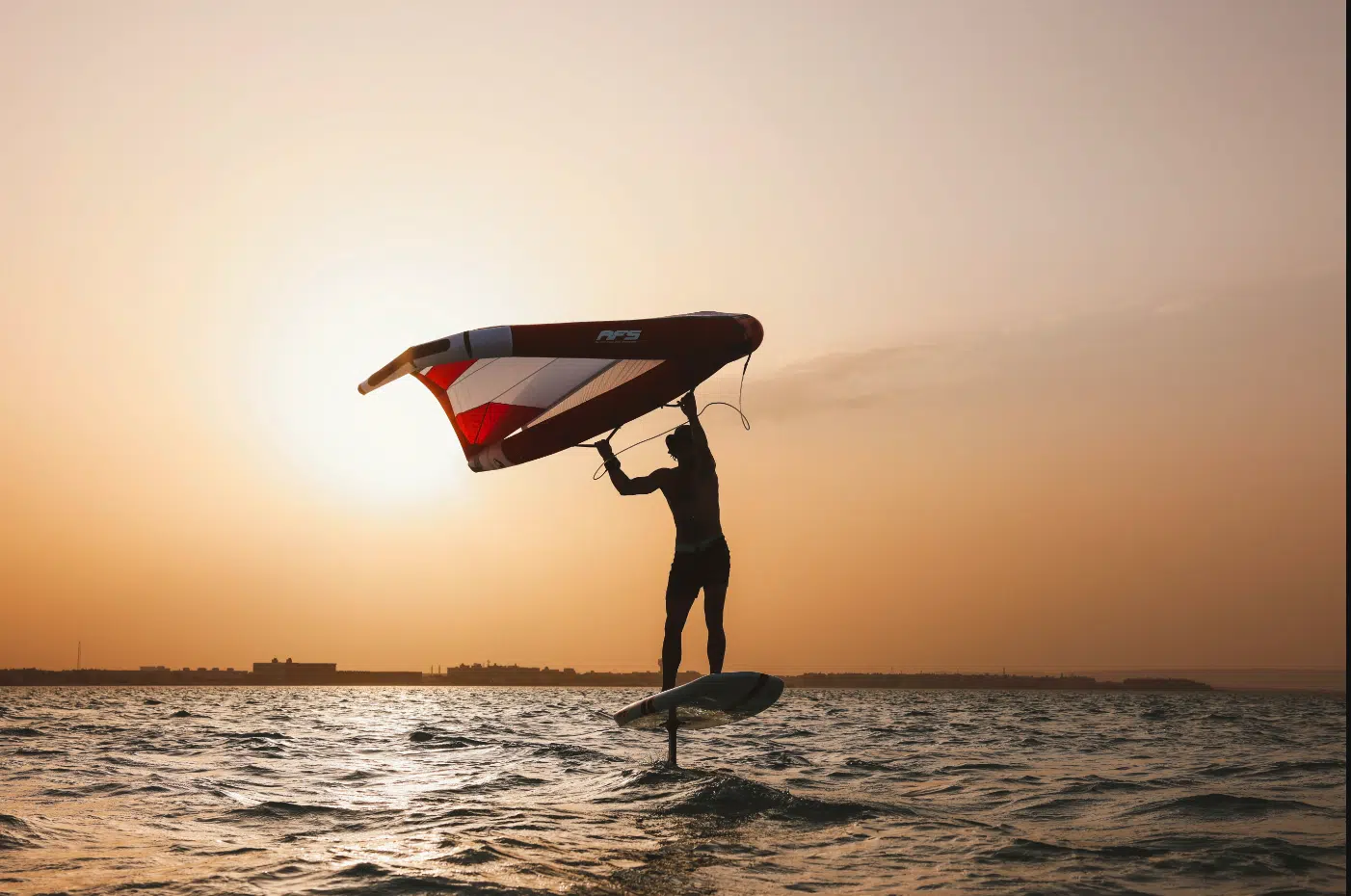
The choice of a foil is based on several criteria: your level, your type of flying, the weather conditions at your favorite spot, your size and, of course, your budget. It’s the foil that helps you take off and fly. Various materials are used in its construction, although carbon fiber is the most commonly used.
Here are the different elements that make up a foil to help you get started and progress:
The plate is the foil’s baseplate, the part that attaches directly to the wing foil board. It is the link between the board and the mast. At AFS, all our carbon masts are molded with the plate to guarantee lightness, rigidity and durability. As an added bonus, there’s no need to add two extra screws, which saves time. It should be noted that some brands offer a separate mast plate, especially when the mast is made of aluminum.
The mast connects the turntable to the fuselage. It can be made of aluminum or carbon (more rigid). It is half-submerged when flying. A short mast (less than 80 cm) is perfect for beginners, as it has the power to limit falls and facilitates learning by keeping the board closer to the water. If you want to keep your first mast for a long time, opt for a 70-75 cm size. As you progress, you’ll be able to move up to a longer mast (85-90 cm), offering more stable sailing on choppy water. Note that a slim mast will go faster, but is not recommended for your first experiences on the water.
When it comes to positioning, place the mast in the rail of your float, more towards the front. This improves take-off (better lift) and provides more lift, especially in light wind conditions. A forward position also makes the board more stable, although it can reduce maneuverability. This setting is particularly suitable for spots with few waves.
The fuselage is the part of the foil that connects the front wing to the horizontal stabilizer. A short fuselage offers more reactivity in maneuvers, while a long fuselage favors speed and stability. The latter is ideal for beginners, as the greater distance between the front wing and the stabilizer facilitates balance.
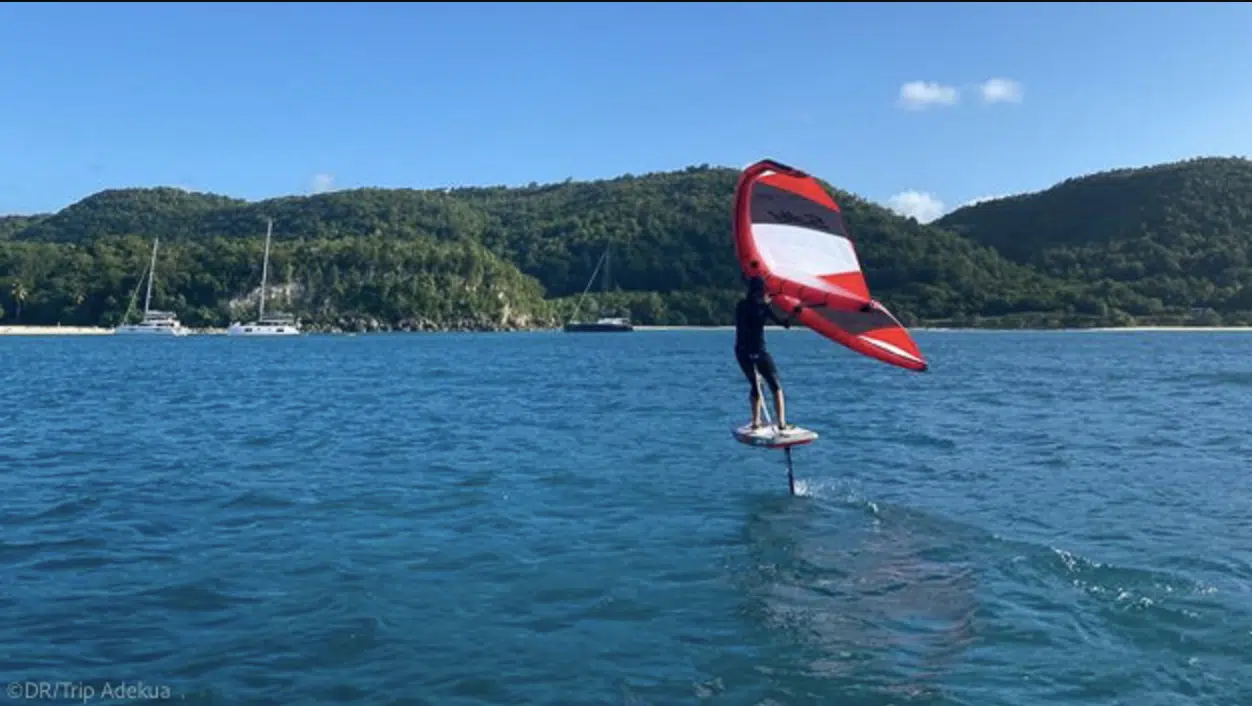
Placed at the front of the fuselage, the front wing generates the foil’s lift, allowing your board to fly above the water.
A large-surface front wing (over 1500 cm²) is ideal for beginners or light wind conditions. It offers greater stability and lift, especially at low speeds. The heavier the rider, the bigger the size of the wing. With experience, you can gradually reduce the surface area of the front kite. Experienced or speed-seeking riders will opt for a high aspect front wing (almost flat profile), ideal for freeride, freestyle or downwind thanks to its enhanced performance. Conversely, beginners should opt for a mid-aspect wing, which is more versatile and easier to master.
Positioned at the rear of the fuselage, the stab is sometimes nicknamed the winglet because of its much smaller size than the front wing. It plays an essential role in ensuring balance and stability during flight. For beginners to wing foiling, this requires a large surface area of around 250 cm². The stab also controls the overall behavior of the foil and contributes to better glide. Together with the front wing and fuselage, it forms the foil’s “plane”. If you need to adjust the angle of incidence of your foil, you can use one or more small wedges. These are placed between the stabilizer and the back of the fuselage to fine-tune the setting.
Although the whole foil plays a key role in the quality of your sessions, depending on your level and the weather conditions, the front wing remains without doubt the central element of the foil.
Choosing the front wing for your foil is an important decision for optimizing your wingfoil sessions and making rapid progress while having fun on the water. The front wing plays a key role in the lift, stability and handling of your equipment. As mentioned above, depending on your level, your size, your sailing program and the wind and sea conditions, several criteria need to be taken into account to select the front wing best suited to your needs.
The rider’s level largely influences the choice of front wing. For your first wing sessions, it’s best to start with a large wing (size between 1500 and 2000 cm² depending on your weight), offering a greater load-bearing surface and therefore greater comfort in flight. This makes it easier to start and control, especially in light wind conditions (less than 20 knots). A low aspect or mid aspect front wing (rounder, wider shape) is ideal for beginners, as it offers greater stability and an easier, smoother take-off. For more experienced riders looking for performance, speed and a more dynamic nav’, or for swell surfing, a high aspect kite (longer and narrower) will be preferable, offering greater responsiveness and maneuverability.
The rider’s weight should not be overlooked. A light rider wishing to learn (under 75 kg) should opt for a front wing between 1500 and 1750 cm². A heavier person, on the other hand, will opt for one with a larger surface area. In wingfoil, there’s no point in trying to switch too quickly to a smaller wing. If you’re lucky enough to sail regularly, you’ll end up going down to a 1200-1300 cm² wing, then below 1000 cm² as you progress.
The size of the front wing also depends on your sailing style and the conditions in which you wish to wingfoil. This varies according to wind strength, but also the condition of the water (wave size, swell, chop or flat water). Downwind enthusiasts will also choose their foil according to their specific sailing program.
Beginners: you’re bound to ride in light seas and winds of less than 25 knots! We recommend that you choose a low or mid aspect foil, with a rounder shape and smaller wingspan than high aspect models. In addition, the wing should be thick to facilitate take-off and offer greater stability.
Intermediate: starting to jibe and stabilize your flights? A foil surface area of 1200-1300 cm² should be suitable. It may also be time to switch to a higher-performance front wing, with a smaller chord (width of front wing). And therefore faster. The smaller the wing, the more speed and maneuverability you’ll benefit from, but starting will be more difficult and low-speed stability will be reduced.
Free fly / downwind : For a rider wishing to practice wingsurfing in swell and have fun releasing his wing while surfing, the option of a high aspect front wing (more or less flat front wing) with a medium to high ratio (between 9 and 11), with a surface area of around 900 cm², is ideal. This is a definite advantage for flying as long as possible! Of course, the stronger the wind, the smaller the surface area, although this is not always the case. A smaller surface area offers greater maneuverability and, above all, helps avoid stalls.
Waves / surfing : If you want to try your hand at surfing foils, surfing breaking waves (not swell), you should start with a front wing with a surface area of around 1000-1200 cm² and a medium aspect ratio (between 8 and 9). This will give you a good compromise between lift and handling, so you can get the most out of the waves.
This is the coefficient that characterizes the aspect ratio of a wingfoil front wing. It’s the wingspan squared divided by the wing’s load-bearing surface. To measure it more simply and approximately, its calculation is: wingspan / wing chord.
The aspect ratio refers to the shape of the front wing and has a direct impact on handling, stability and speed. A medium-to-high aspect ratio (more elongated shape) is suitable for more technically adept wingfoilers. On the other hand, wingfoil beginners should opt for a foil with a lower aspect ratio. The longer the kite, the longer you’ll glide and the faster you’ll go, but the more difficult it will be to control your gear.
Wind also plays a major role in the choice of front wing. Wind is a key factor in the choice of front wing. Depending on the strength of the wind, the size of the wing can be adjusted. For example, in very light wind conditions (less than 15 knots), a larger wing, even for experienced riders, is necessary to guarantee sufficient lift for easy take-off.
The size of the stabilizer is also an important criterion for completing your foil set. A medium-sized stabilizer is ideal for beginners, as it offers a good balance between stability and maneuverability. More experienced riders can opt for smaller stabs, which offer greater responsiveness and control in all conditions. Once you feel more comfortable on the water, you can upgrade to a 180 cm² stabilizer for even greater performance.
| Level | Beginner | Intermediate | Advanced |
|---|---|---|---|
| Size | 1500 to 2000 cm² | 1000 to 1500 cm² | 700 to 1200 cm² |
| Aspect ratio | Low and mid aspect (rounded and hollow shape) | Medium aspect ratio (around 8) | High aspect (elongated, fairly flat shape). Medium to high aspect ratio (≥ 9) |
Today, there’s a wide variety of foils and front wings to suit all wingfoilers’ needs. And it’s true that it’s not easy to choose the right size or model for your needs. So don’t hesitate to visit a surf shop, check out the different brands, watch video tutorials or read specialized magazines, test the foils at events or read advice on the Internet to refine your choice. Once you’ve chosen your foil, the idea is to enjoy surfing with good vibes… And progress in this unique water sport.

Click & Collect
Secure payment in 3 or 4 instalments
Advice from enthusiasts
Satisfied or your money back
2 to 3 years warranty
Worldwide delivery
Votre emplacement actuel et les langues disponibles
Your current location and available languages
Build your complete foil equipment according to your practice and objectives.
Answer a few quick questions and get a suggestion.
Compare up to three stabilizers side by side.
Coming soon...
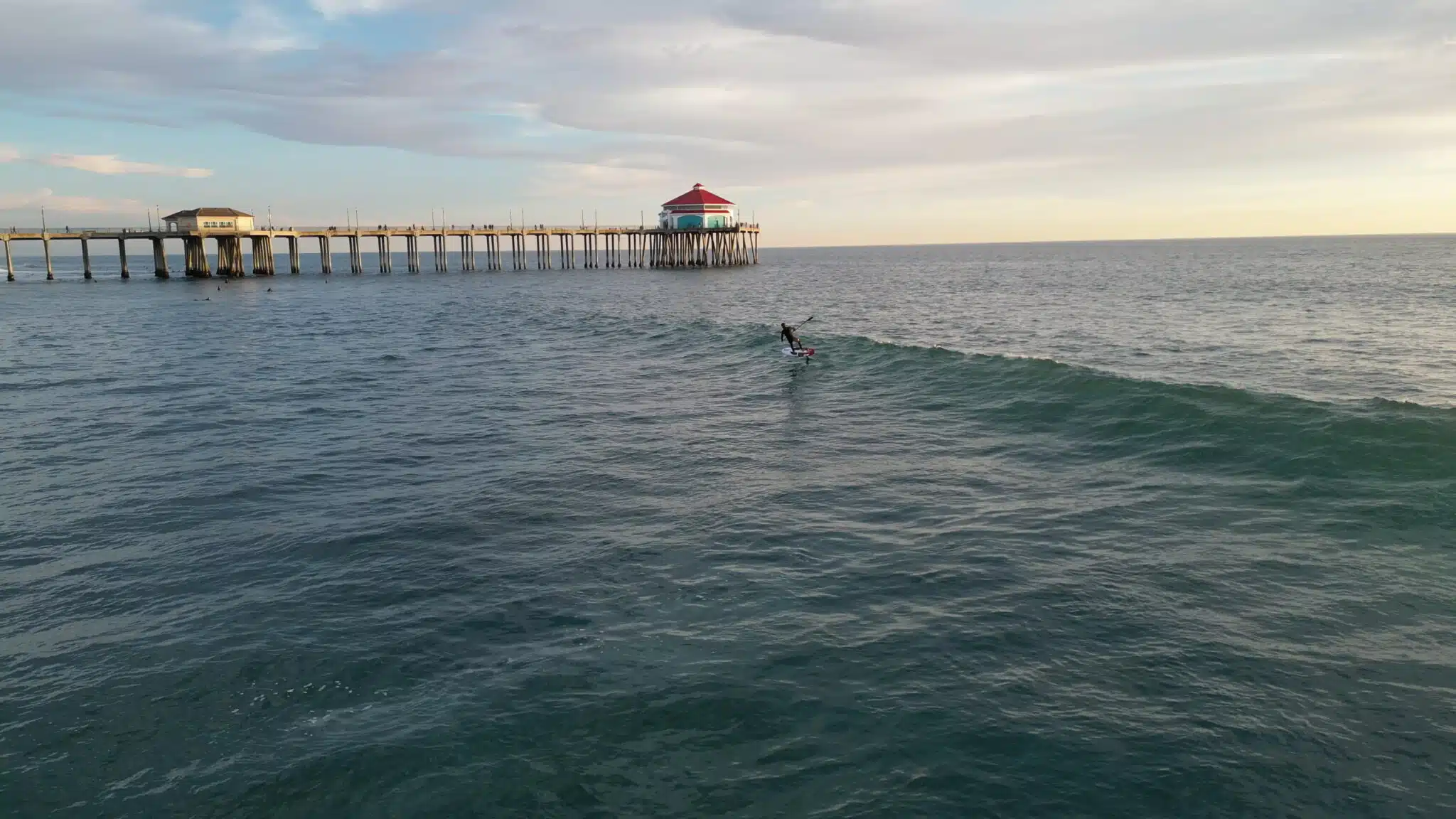
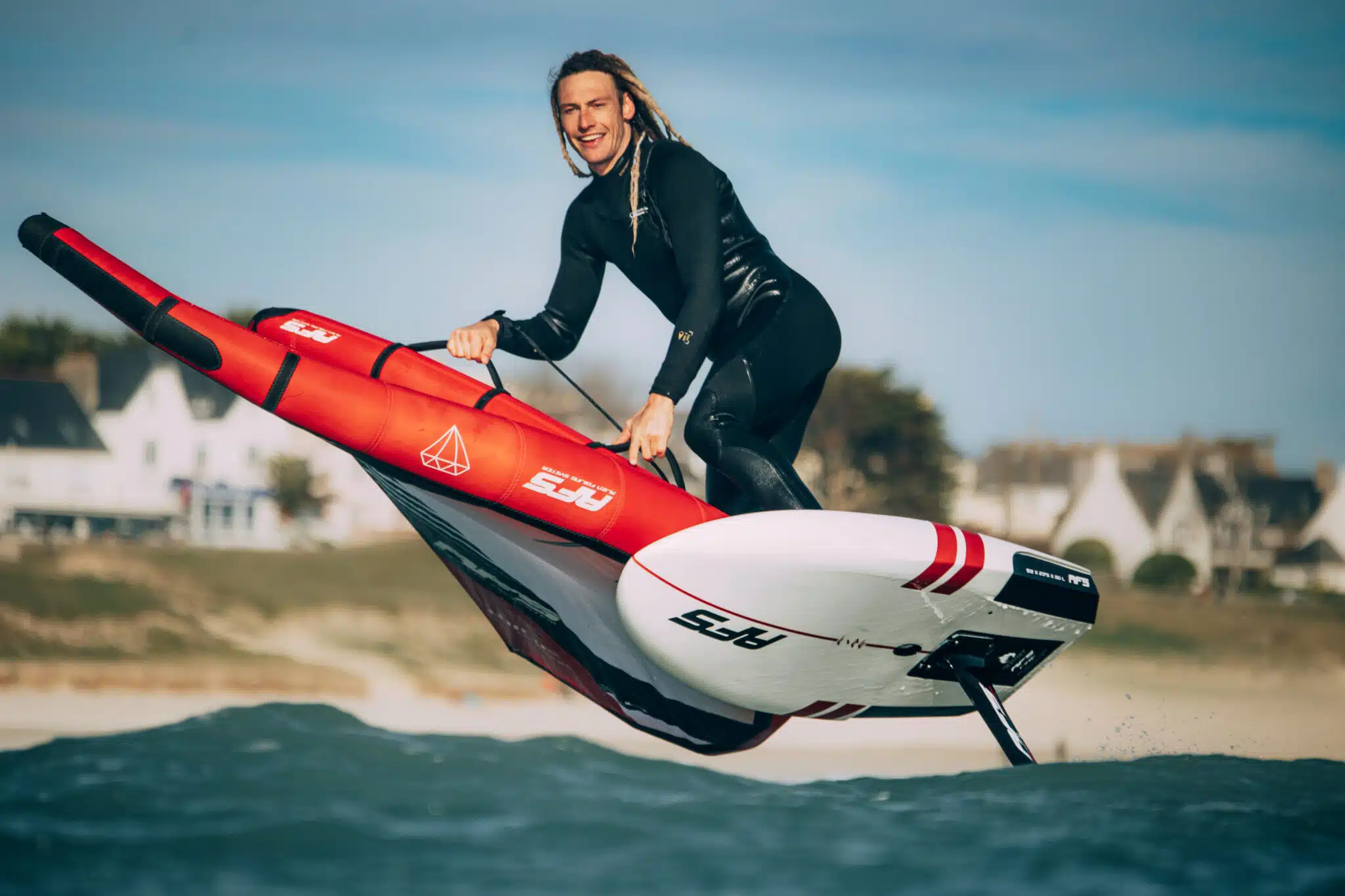

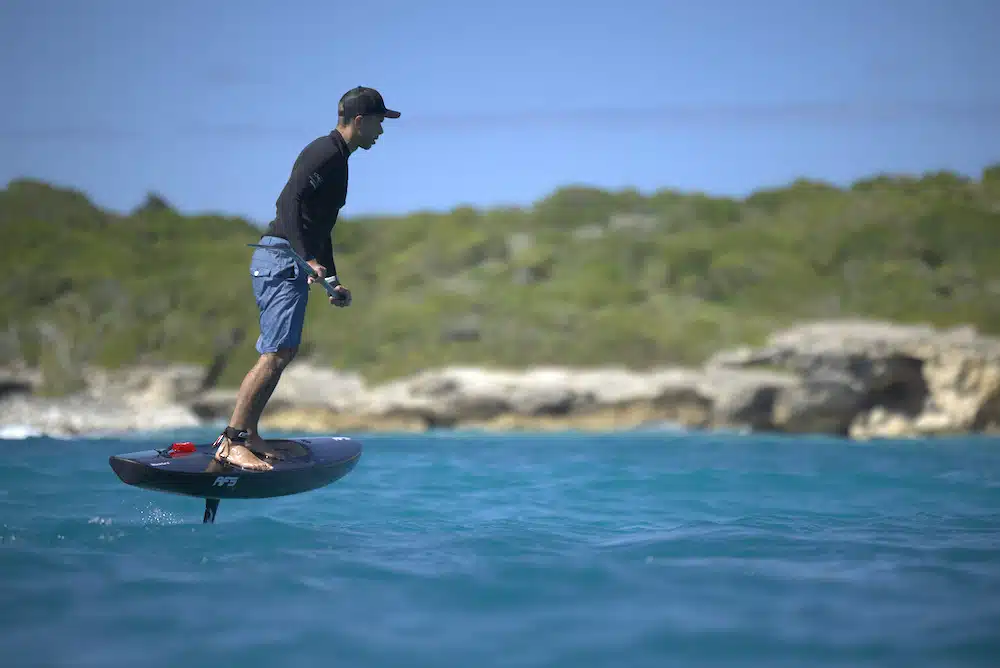
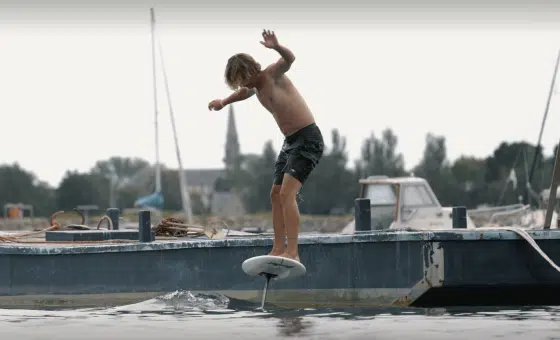
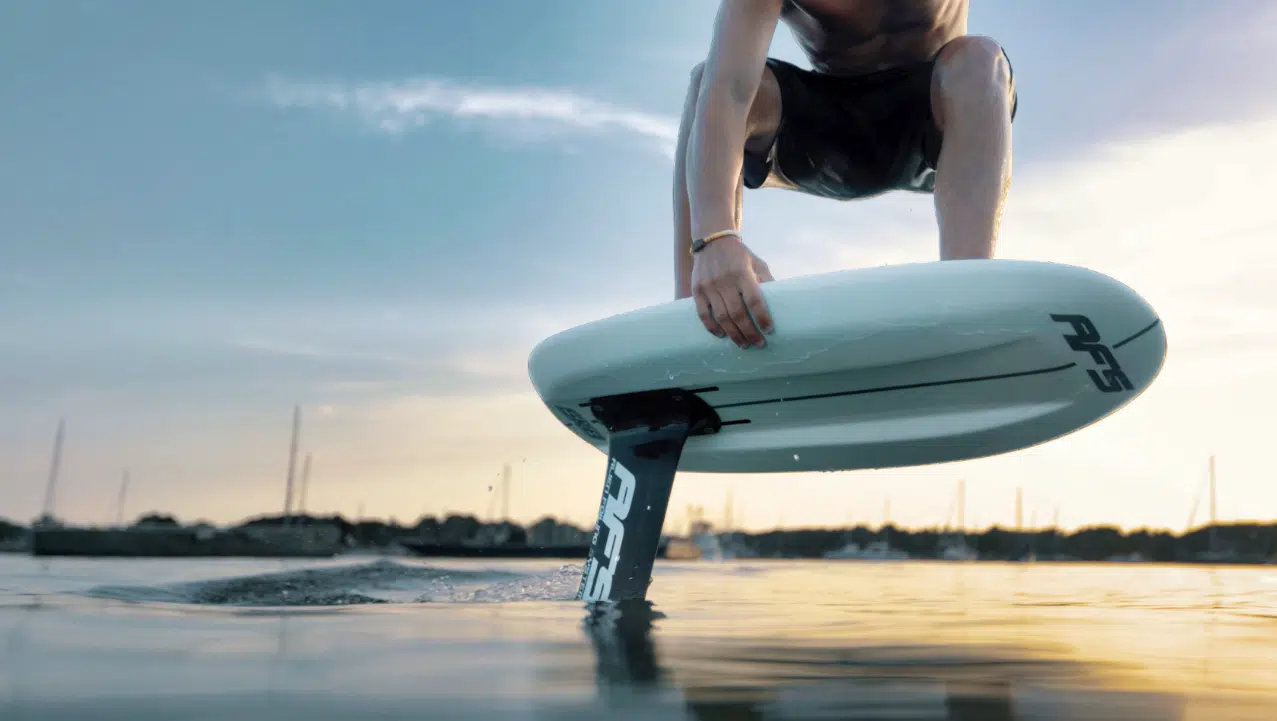
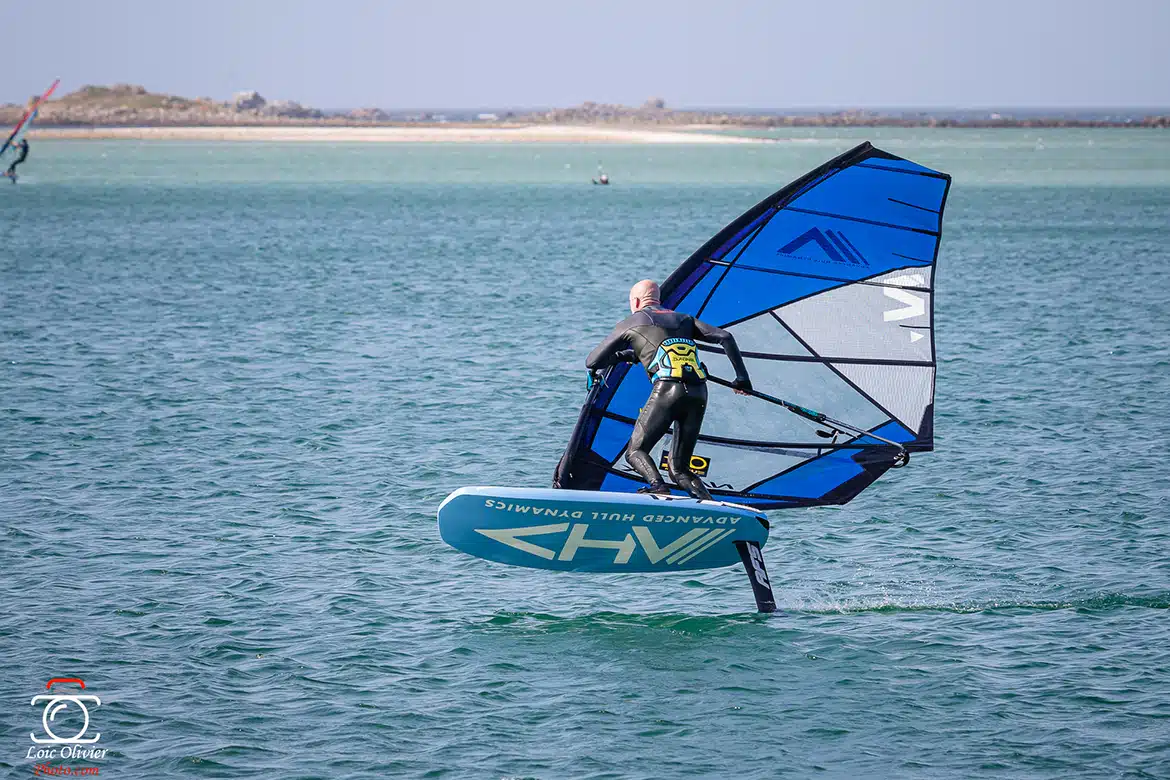
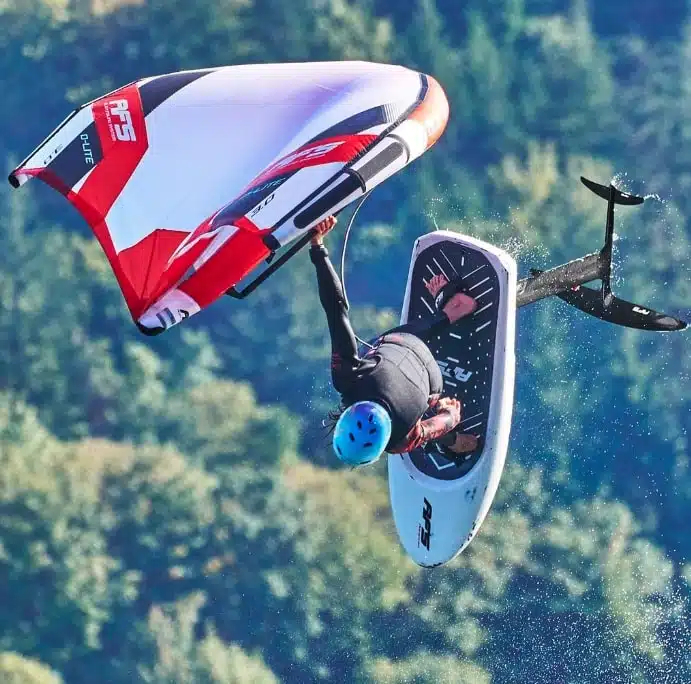
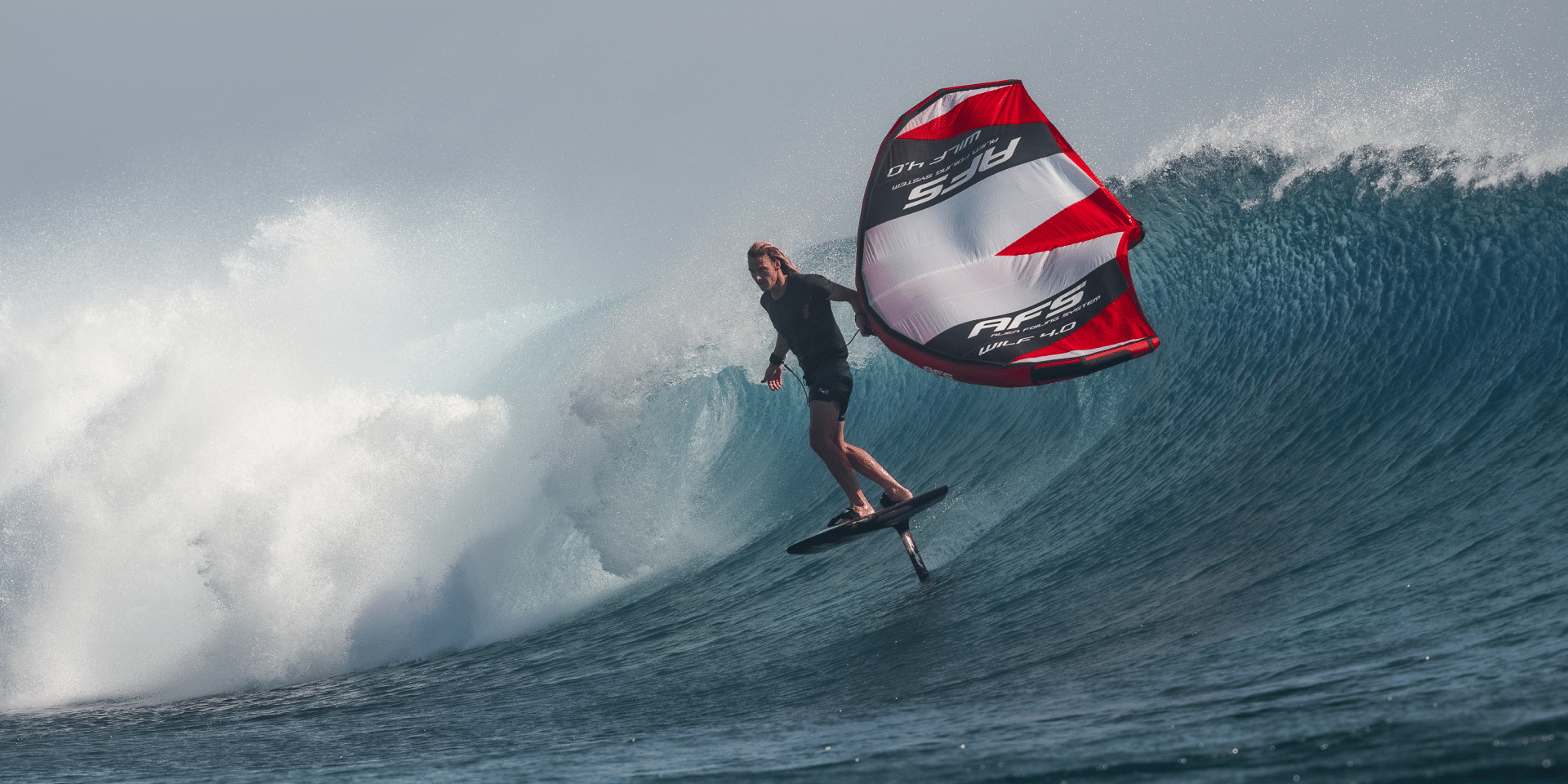
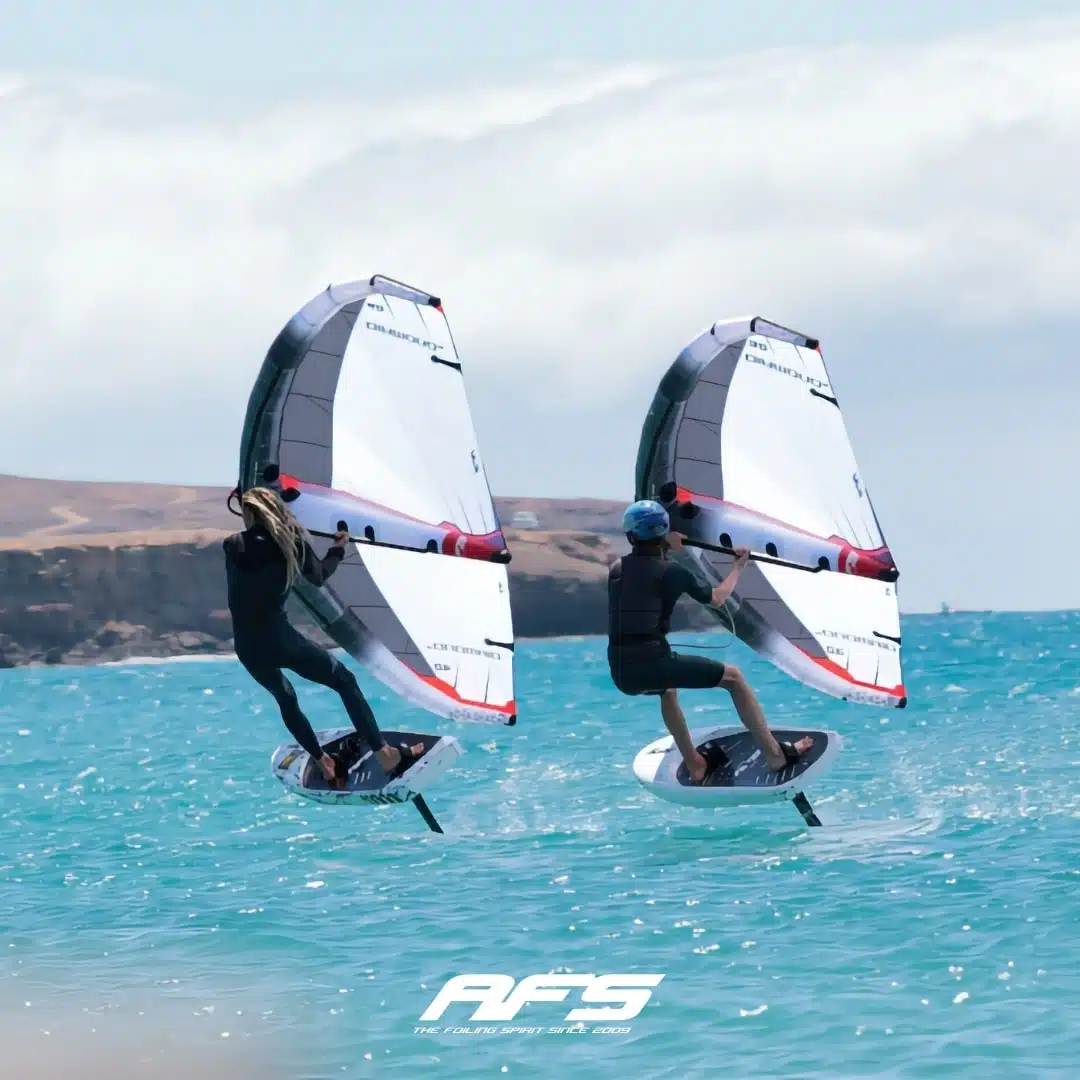
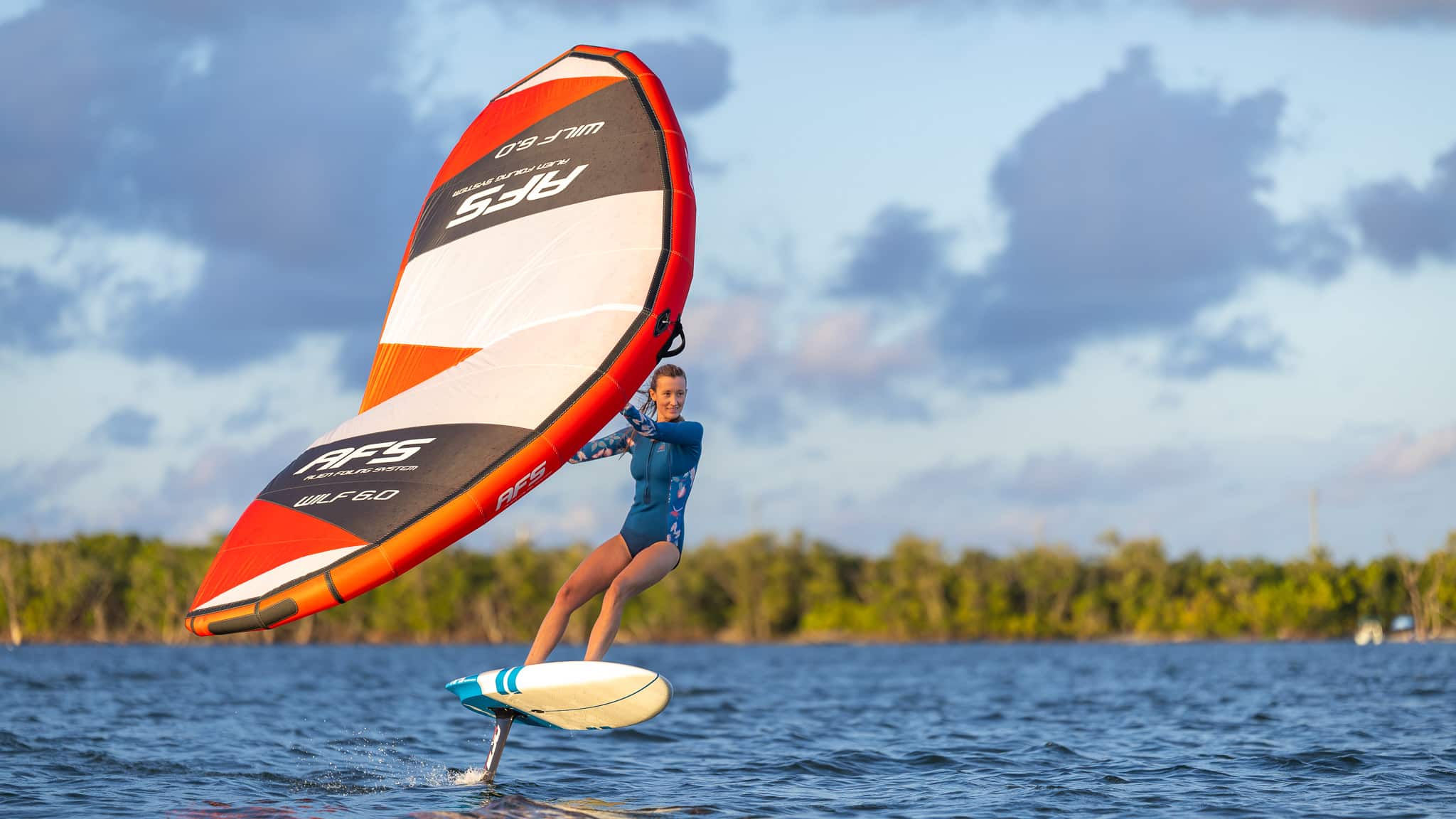

You will receive a product in excellent condition, with a few minor scratches from use.
Your product may have a few minor scratches or visual defects, but it's ready to take to the water again!
Despite deeper scratches or more pronounced visual defects, your product can take to the sea without hesitation: at this price, it's a shame to miss out!